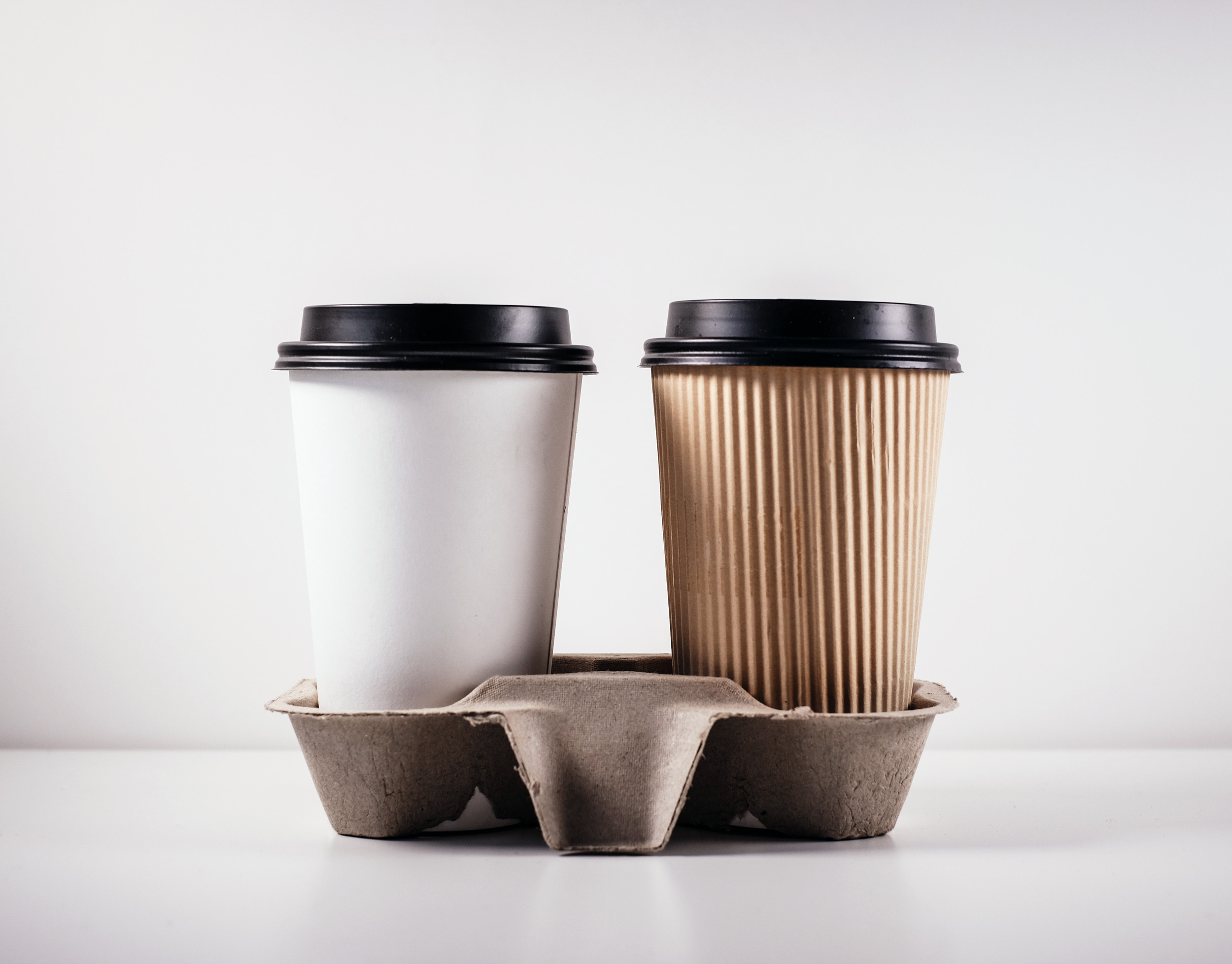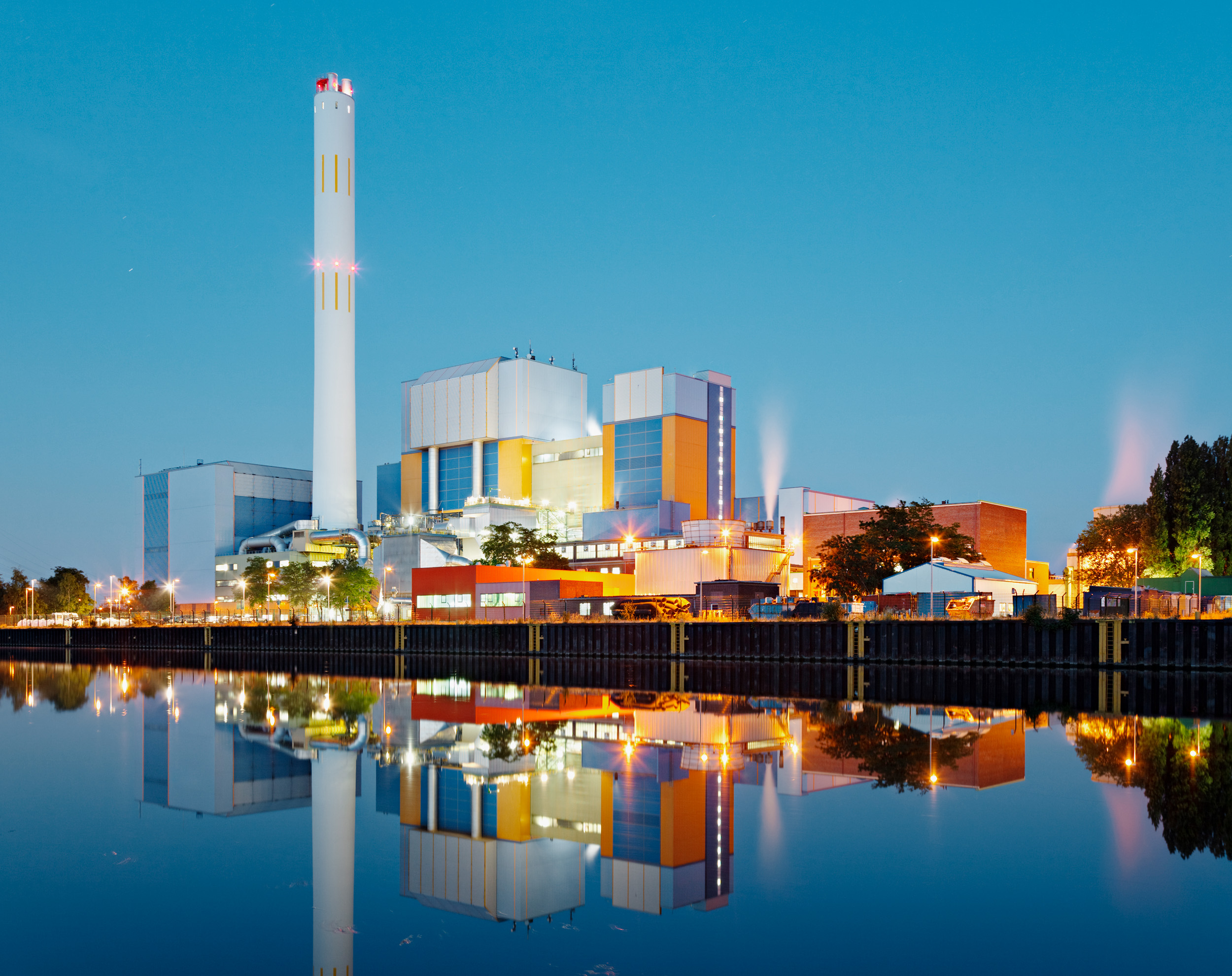Waste disposal is an important and frequently overlooked part of the environmental impact of producing coffee. As we learned in the lessons on coffee production, the way a producer manages the waste from pruning trees or the wastewater from coffee processing can have a big overall impact on the carbon footprint of a coffee. Despite this, many life-cycle analyses (LCAs) examining coffee production ignore the contribution to greenhouse gas (GHG) emissions of the waste-disposal part of the coffee life cycle.
However, in coffee consuming countries, the environmental impacts of waste generated by the coffee industry are very much in the public eye — thanks in part to the spotlight on the environmental footprint of disposable cups, described in the previous lesson. Manufacturers of packaging products have responded by producing a range of alternative coffee bags and disposable cups, using compostable and recyclable materials.
 Compostable takeaway cups are touted as a solution to plastic waste. Most compostable plastics produce more greenhouse gas emissions than conventional plastics, however.
Compostable takeaway cups are touted as a solution to plastic waste. Most compostable plastics produce more greenhouse gas emissions than conventional plastics, however.
The effectiveness of these alternative materials at reducing the carbon footprint varies, however. As discussed in Lesson 2.08, some compostable materials can generate more CO2 in production and processing than traditional plastics. While diverting material from landfill is regarded as a worthwhile goal in itself, sometimes sending waste to a landfill actually releases less CO2 than other disposal methods. And even when plastics can be recycled, in some cases it’s still more efficient to simply burn them and capture the energy released — and modern incinerators are very efficient in removing pollutants from the exhaust gases (R Lima and RT Bachmann, 2002).
Whatever method of disposal is used, the overall environmental impact of packaging is a small part of the carbon footprint of coffee. However, in this lesson, we attempt to untangle some complexities to help you make smart decisions about how to manage waste disposal in your business.
Avoided Impacts
The environmental effects of various waste disposal methods often depends on ‘avoided impacts’. When a coffee cup is recycled, the plastic can be turned into something new, thereby avoiding the impact of digging up (or growing) and processing the raw manufacturing materials. When a cup is incinerated, the energy released can be used to generate electricity, replacing energy from fossil fuels. And when it is composted, the compost can be used in place of chemical fertilisers or peat, which is widely used in horticulture as a growing medium.
In each case, the environmental impacts depend on what is being replaced. In countries that mainly use fossil fuels to generate electricity, the avoided impacts provided by a waste-to-energy plant can be substantial. Similarly, recycling reduces environmental impacts only if the recycled plastic replaces environmentally damaging raw materials. If there isn’t a market for the recycled materials, then the energy used in recycling may result in increased rather than avoided emissions (J Vendries et al. 2018).
Similarly, the environmental benefits of composting packaging materials mainly come from using the compost to replace chemical fertilisers or peat, both of which are associated with significant GHG emissions. However, compostable packaging produces low-nutrient compost, which means the amount of fertiliser it can offset is limited (V Rossi et al. 2015).
The optimal disposal method for your packaging therefore will be different from country to country. It depends on the particular materials that make up your packaging, the current market for the plastic and the raw materials from which it’s made, and the proportion of renewable energy used in the local power grid. This means that LCAs often report contradictory results, making it difficult to generalise and choose a ‘best’ method overall.
Recycle, Compost, or Burn?
A review of multiple LCAs for packaging found that recycling is usually better for the environment than incineration or disposal in a landfill (J Vendries et al. 2018). However, there’s often a tradeoff involved in avoiding GHG emissions by recycling. For example, one study found that in Arizona, recycling reduced GHG emissions but increased smog, ozone depletion, and acid rain, mainly as a result of transporting the plastic to China to be recycled (TA Hottle et al. 2017).
Most studies assume that recycled plastics displace an equal amount of new plastic, even though this is not the case. Contamination in the waste stream reduces the effectiveness of recycling, and plastics exported for recycling can still end up in a landfill or pollute the oceans if they are not handled correctly.
 Modern waste-to-energy power plants like this one are sometimes more efficient than recycling in reducing greenhouse gas emissions.
Modern waste-to-energy power plants like this one are sometimes more efficient than recycling in reducing greenhouse gas emissions.
In most LCAs, incineration emerges as the second-best option. In a passionately argued blog post, Professor Abbott argues that as an alternative to using resources to separate, transport, clean, and recycle plastics, incineration in a waste-to-energy plant is the most effective way to deal with plastic waste, utilising current technology.
This especially applies with materials such as coffee bags and paper cups, where the different layers involved must be separated before recycling. One study looked at disposal of Tetra Pak cartons, which contain three layers of paper, polythene, and aluminium foil. The researchers found that despite some disadvantages, incineration, when compared with recycling, reduces GHG emissions (Xie et al. 2013).
Most studies show that compostable plastics produce more GHG overall than traditional plastics do — whether the conventional plastic is burned, recycled, or sent to a landfill (J Vendries et al. 2018). Producing compostable plastics currently releases more CO2 than conventional plastics, and composting itself releases additional greenhouse gases. On the other hand, both recycling and incineration help avoid other CO2 emissions that would have been generated, by saving on raw materials or by generating electricity. Even in a landfill, gases such as methane that are released can be recaptured and used to generate energy.
A study on espresso capsules commissioned by Nespresso (Quantis 2011) found that compostable espresso capsules resulted in marginally higher greenhouse gas emissions overall than incineration of the traditional aluminum-based capsules.
An LCA conducted in Holland looking specifically at takeaway cups (J Potting and E van der Harst 2015) found that recycling has slightly fewer environmental impacts than incineration or composting, though it depends on what proportion of electricity used comes from renewable sources. In general, though, the authors conclude that ‘composting biocups is less good than other waste treatment processes’.
A further problem with composting is that most compostable waste doesn’t get composted, due to a lack of facilities. In the US, for example, most composting facilities do not accept compostable packaging (B Platt et al. 2014). When this is the case, these materials typically end up in landfills (D Meeks et al. 2015).
In one situation, composting is more effective than other waste disposal methods: when food packaging materials are contaminated with food waste. This has twin benefits: it saves the energy required to clean and sort waste before recycling, and it converts more food waste into compost rather than depositing it in a landfill. Even in this case, however, using a biodigester, which creates biogas that can be used as fuel, is preferable to composting (V Rossi et al. 2015).
Composting may offer advantages beyond reducing GHC emissions — for example, by reducing marine pollution or ecotoxicity. However, it’s worth noting that the most common bioplastic, PLA, doesn’t break down in the marine environment any faster than traditional plastics (J Vendries et al. 2018), so responsible waste management is still vitally important in protecting marine life.
Disposal of Organic Waste
Besides packaging, another major waste stream to consider in the consumption stage of coffee’s life cycle is organic waste — that is, chaff and spent coffee grounds. Unlike packaging products, these substances contain nutrients, so they are suitable for composting, and the use of compost in agriculture can avoid some GHG emissions from fertilisers (C Santos et al. 2017).
These organic wastes can also be used to make fuel. Spent coffee grounds contain 10–15% oil, with suitable properties for making biodiesel (N Kondamudi et al. 2008). Coffee grounds and chaff can also be pressed into pellets and burned directly. Alternatively, they can be heated, in a process similar to charcoal making, to produce biochar (X Li et al. 2014), which can be used as a fuel or as a source of activated carbon.
Perhaps the most promising prospect for handling spent coffee in the future is to separate and recover its various components in a so-called biorefinery. Spent coffee contains valuable components such as caffeine and precursor جزيئات that can be used to manufacture food ingredients, pharmaceuticals, or cosmetics (R Campos-Vega et al. 2015). Extracting these components and using the remainder for fuel and activated carbon may prove to be the most efficient pathway for disposal of coffee waste (AE Atabani et al. 2019).